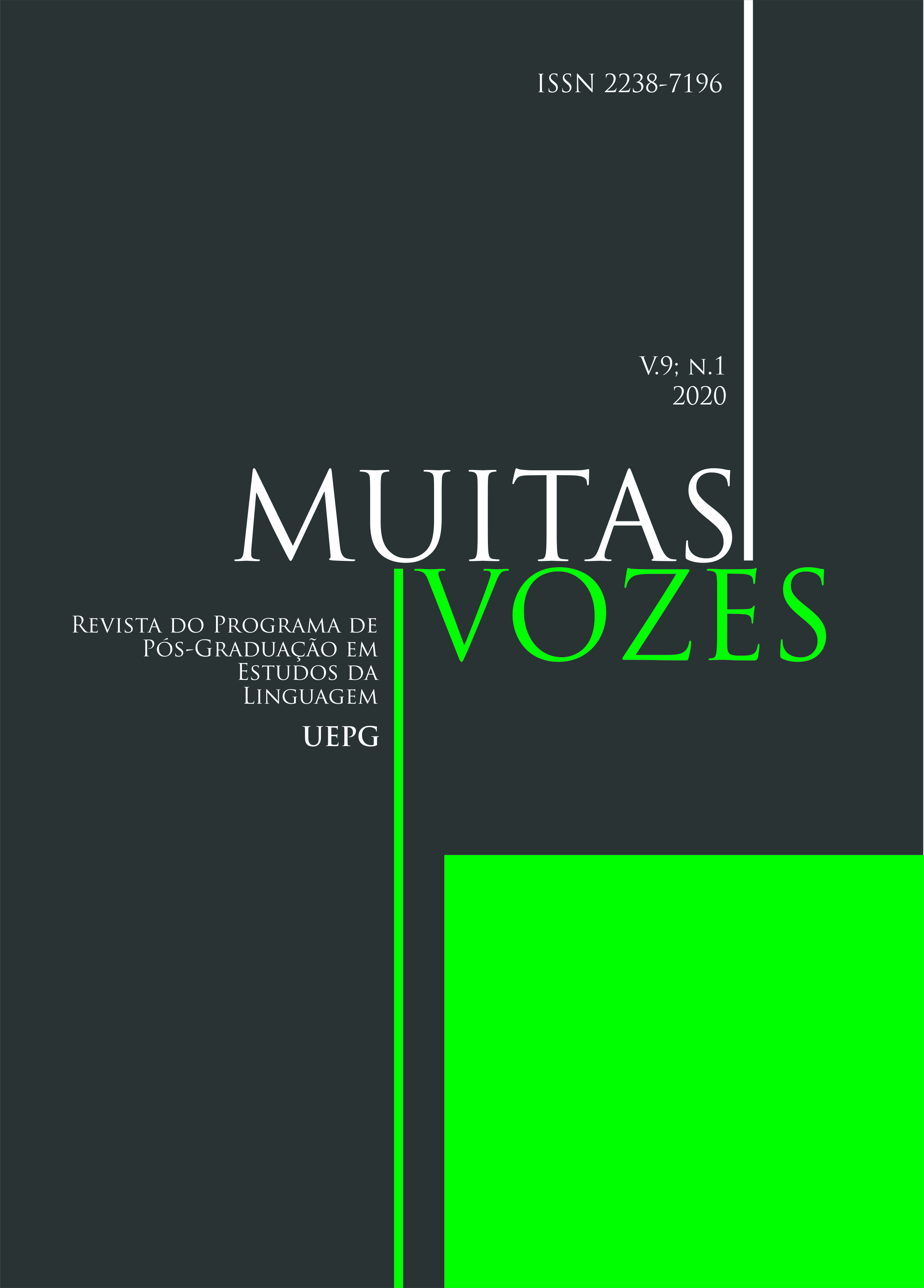THE ENGLISH SYLLABIC CVC PATTERN BY BRAZILIAN LEARNERS
Abstract
The languages of the world have peculiarities that may be strange for L2 learners, who, when exposed to a new system, might demonstrate ineffectiveness in the phonological knowledge of the target language. Among the aspects to be observed in this process, there are the syllabic patterns of the target language, which might present phonotactic distinctions. Thus, this work aimed to investigate how Brazilian learners of English configure its syllabic structure. They were divided into two groups: learners who received instruction and learners who did not receive explicit instruction regarding the phonetic-phonological aspects of such a structure. The theoretical basis presents the ideas of Alves (2012), Barbosa and Madureira (2015), Collischonn (2014), Pedrosa (2012) and Selkirk (1982), among others. The results demonstrate that the groups presented different strategies for the production of the CVC syllable. Even in the group where there were expected productions (CVC syllable), the learners seemed to compensate for the vowel absence by lengthening the occlusive in coda position, showing interesting variable processes. Such research aims to contribute to the teaching of English (L2), and also to demonstrate that several acoustic clues that act in the linguistic development of L2 should not be neglected, since they can provide interesting answers in the course developed by the learner.
Downloads
Downloads
Published
How to Cite
Issue
Section
License

Este obra está licenciado com uma Licença Creative Commons Atribuição 4.0 Internacional.
Transferência de direitos autorais: Caso o artigo submetido seja aprovado para publicação, JÁ FICA ACORDADO QUE o autor AUTORIZA a UEPG a reproduzi-lo e publicá-lo na REVISTA MUITAS VOZES, entendendo-se os termos "reprodução" e "publicação" conforme definição respectivamente dos incisos VI e I do artigo 5° da Lei 9610/98. O ARTIGO poderá ser acessado tanto pela rede mundial de computadores (WWW - Internet), como pela versão impressa, sendo permitidas, A TÍTULO GRATUITO, a consulta e a reprodução de exemplar do ARTIGO para uso próprio de quem a consulta. ESSA autorização de publicação não tem limitação de tempo, FICANDO A UEPG responsável pela manutenção da identificação DO AUTOR do ARTIGO.



